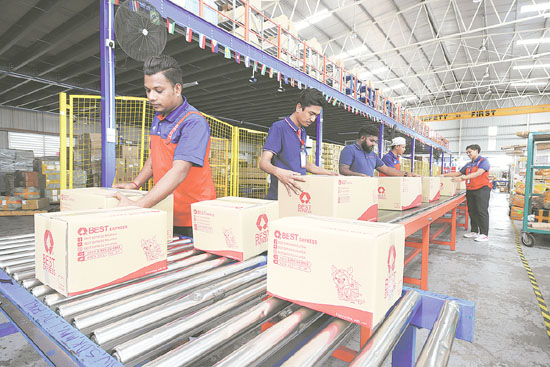China Daily
The year 2021 has been a very challenging time for many people in the world, especially with the COVID-19 pandemic still raging. However, the year also showed how resilient we could be.
Despite a fragile global logistics system, cross-border e-commerce import and export in the first nine months of this year increased 20.1% year-on-year in China. Behind this remarkable growth, as a veteran in this industry for 17 years, I know how many efforts have been made by entrepreneurs and employees. And I am hopeful that cross-border e-commerce, as a relatively new type of international trade, will continue to grow and keep us more connected globally than before.
As we are heading into the new year 2022, I would like to share my predictions for the industry.
To go local
Not many cross-border sellers could have imagined that containers, with their goods inside, would be stuck for days at a seaport. The global logistics system showed a different image in 2021, featuring unstable and expensive sea shipping and price hikes in air freight.
Recognizing the importance of delivery predictability, some cross-border e-commerce firms have chosen to transport their goods first to warehouses in the destination country so that once buyers place an order, they can start to deliver, deviating from the previous way of shipping directly to end buyers. This model has allowed sellers to maintain efficiency and cut costs especially amid peak seasons.
The Ministry of Commerce of China said in July this year that Chinese companies, including e-commerce platforms and logistics firms, have built 1,900 overseas warehouses with an area of about 13.5 million square meters, mainly in North America, Europe and Asia. In addition to storage and last-mile delivery, companies running overseas warehouses also offer after-sale service, supply chain financing, compliance consulting and local marketing.
I expect more overseas warehouses will be built in the new year. It will also become a more commonplace practice for cross-border sellers to move their products first into overseas warehouses, to guarantee timely delivery and enable their buyers to feel little difference between making a purchase from a website hosted an ocean away and one within their own home country.
To decentralize
While it is still common to leverage on established e-commerce marketplaces to do cross-border business, decentralization is the hottest trend which all industry participants need to pay attention to.
Behind the boom of decentralized e-commerce, in scenarios such as independent websites, social media communities, and livestreaming, are Software as a Service tools such as Shopify and MyyShop. These digital tools have significantly lowered the barriers for people to do global trade, enabling them to establish their own store, find their suppliers, handle payment and logistics easily.
With these tools, many individuals with influence on social media platforms or among their acquaintance but without full-fledged e-commerce capacity, are becoming dropshippers in countries ranging from the United States to Nigeria.
Actually, Grand View Research expects the global dropshipping market to reach $557.9 billion by 2025, recording a compound annual growth rate of 28.8 percent from 2020 to 2025.
This is one way how cross-border e-commerce evolves. It is not only about competition among peers of the same category on one e-commerce marketplace, but also about connection. It is equally important how one can connect goods with those in need.
I expect the decentralized cross-border e-commerce to flourish, offering inclusive growth opportunities to every one to benefit from global trade.
To try various marketing tools
As the decentralization trend shows, online shoppers’ preferences are also being diversified.
It is apparent that there is no one-size-fits-all solution when it comes to cross-border e-commerce marketing in different countries. More and more companies will step further to experiment with various marketing tools to identify their buyers and follow where they go.
For example, TikTok is, in first place, a short-video platform for smartphone users. But early birds are turning that into a shoppable channel as the number of its monthly active users globally exceeds 1 billion. They post videos that explain how their products can be used to invite potential buyers, and also share key information on where to buy. Some videos on toys have even been viewed a million times, leading to thousands of transaction deals in days.
While livestreaming has been widely believed to be a useful tool for businesses to communicate with local consumers, some business-to-business suppliers have found that this digital tool works for them even across the borders when the pandemic deters in-person consultation. It just takes more efforts to overcome the difficulties, such as the time difference and languages.
These are both interesting attempts I have noticed this year and I would bet more innovative ideas and practice to show up for the new year.
All in all, I am sure that cross-border e-commerce will continue to gain momentum for the next decade as the e-commerce infrastructure improves worldwide. All players can benefit from this relatively new form of global trade as long as they can select their proper products properly and find their own way to reach their buyers.





